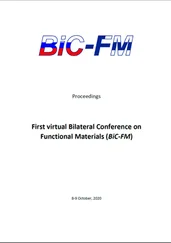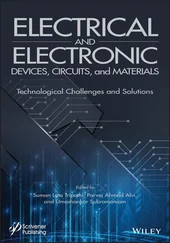135 135 Lenherr, P., Allgayer, N., Weiger, R. et al. (2012). Tooth discoloration induced by endodontic materials: a laboratory study. Int. Endod. J. 45 (10): 942–949.
136 136 Ioannidis, K., Mistakidis, I., Beltes, P., and Karagiannis, V. (2013). Spectrophotometric analysis of coronal discolouration induced by grey and white MTA. Int. Endod. J. 46 (2): 137–144.
137 137 Oliveira, M.G., Xavier, C.B., Demarco, F.F. et al. (2007). Comparative chemical study of MTA and Portland cements. Braz. Dent. J. 18 (1): 3–7.
138 138 Camilleri, J., Kralj, P., Veber, M., and Sinagra, E. (2012). Characterization and analyses of acid‐extractable and leached trace elements in dental cements. Int. Endod. J. 45 (8): 737–743.
139 139 Song, J.S., Mante, F.K., Romanow, W.J., and Kim, S. (2006). Chemical analysis of powder and set forms of Portland cement, gray ProRoot MTA, white ProRoot MTA, and gray MTA‐Angelus. Oral Surg. Oral Med. Oral Pathol. Oral Radiol. Endod. 102 (6): 809–815.
140 140 Santos, A.D., Araujo, E.B., Yukimitu, K. et al. (2008). Setting time and thermal expansion of two endodontic cements. Oral Surg. Oral Med. Oral Pathol. Oral Radiol. Endod. 106 (3): e77–e79.
141 141 Duarte, M.A., De Oliveira Demarchi, A.C., Yamashita, J.C. et al. (2005). Arsenic release provided by MTA and Portland cement. Oral Surg. Oral Med. Oral Pathol. Oral Radiol. Endod. 99 (5): 648–650.
142 142 De‐Deus, G., de Souza, M.C., Sergio Fidel, R.A. et al. (2009). Negligible expression of arsenic in some commercially available brands of Portland cement and mineral trioxide aggregate. J. Endod. 35 (6): 887–890.
143 143 Camilleri, J., Sorrentino, F., and Damidot, D. (2015). Characterization of un‐hydrated and hydrated BioAggregate™ and MTA Angelus™. Clin. Oral Investig. 19 (3): 689–698.
144 144 Camilleri, J., Sorrentino, F., and Damidot, D. (2013). Investigation of the hydration and bioactivity of radiopacified tricalcium silicate cement, Biodentine and MTA Angelus. Dent. Mater. 29 (5): 580–593.
145 145 Grech, L., Mallia, B., and Camilleri, J. (2013). Investigation of the physical properties of tricalcium silicate cement‐based root‐end filling materials. Dent. Mater. 29 (2): e20–e28.
146 146 Odler, I. (1993). Hydration, setting and hardening of Portland cement. In: Lea's Chemistry of Cement on Concrete (ed. P.C. Hewlett), 241–297. Oxford: Elsevier Butterworth‐Heinemann.
147 147 Fridland, M. and Rosado, R. (2003). Mineral trioxide aggregate (MTA) solubility and porosity with different water‐to‐powder ratios. J. Endod. 29 (12): 814–817.
148 148 Torabinejad, M. and Parirokh, M. (2010). Mineral trioxide aggregate: a comprehensive literature review – Part II: Leakage and biocompatibility investigations. J. Endod. 36 (2): 190–202.
149 149 Torabinejad, M., Hong, C.U., Pitt Ford, T.R., and Kettering, J.D. (1995). Antibacterial effects of some root end filling materials. J. Endod. 21 (8): 403–406.
150 150 Estrela, C., Bammann, L.L., Estrela, C.R. et al. (2000). Antimicrobial and chemical study of MTA, Portland cement, calcium hydroxide paste, Sealapex and Dycal. Braz. Dent. J. 11 (1): 3–9.
151 151 Al‐Hezaimi, K., Al‐Shalan, T.A., Naghshbandi, J. et al. (2006). Antibacterial effect of two mineral trioxide aggregate (MTA) preparations against Enterococcus faecalis and Streptococcus sanguis in vitro. J. Endod. 32 (11): 1053–1056.
152 152 Stowe, T.J., Sedgley, C.M., Stowe, B., and Fenno, J.C. (2004). The effects of chlorhexidine gluconate (0.12%) on the antimicrobial properties of tooth‐colored ProRoot mineral trioxide aggregate. J. Endod. 30 (6): 429–431.
153 153 Holt, D.M., Watts, J.D., Beeson, T.J. et al. (2007). The anti‐microbial effect against enterococcus faecalis and the compressive strength of two types of mineral trioxide aggregate mixed with sterile water or 2% chlorhexidine liquid. J. Endod. 33 (7): 844–847.
154 154 Hernandez, E.P., Botero, T.M., Mantellini, M.G. et al. (2005). Effect of ProRoot MTA mixed with chlorhexidine on apoptosis and cell cycle of fibroblasts and macrophages in vitro. Int. Endod. J. 38 (2): 137–143.
155 155 Rechenberg, D.K., De‐Deus, G., and Zehnder, M. (2011). Potential systematic error in laboratory experiments on microbial leakage through filled root canals: review of published articles. Int. Endod. J. 44 (3): 183–194.
156 156 Wu, M.K. and Wesselink, P.R. (1993). Endodontic leakage studies reconsidered. Part I. Methodology, application and relevance. Int. Endod. J. 26 (1): 37–43.
157 157 De‐Deus, G. (2008). New directions in old leakage methods. Int. Endod. J. 41 (8): 720–721; disc. 1–3.
158 158 Torabinejad, M., Higa, R.K., McKendry, D.J., and Pitt Ford, T.R. (1994). Dye leakage of four root end filling materials: effects of blood contamination. J. Endod. 20 (4): 159–163.
159 159 Martell, B. and Chandler, N.P. (2002). Electrical and dye leakage comparison of three root‐end restorative materials. Quintessence Int. 33 (1): 30–34.
160 160 Wu, M.K., Kontakiotis, E.G., and Wesselink, P.R. (1998). Long‐term seal provided by some root‐end filling materials. J. Endod. 24 (8): 557–560.
161 161 Karlovic, Z., Pezelj‐Ribaric, S., Miletic, I. et al. (2005). Erbium:YAG laser versus ultrasonic in preparation of root‐end cavities. J. Endod. 31 (11): 821–823.
162 162 Fischer, E.J., Arens, D.E., and Miller, C.H. (1998). Bacterial leakage of mineral trioxide aggregate as compared with zinc‐free amalgam, intermediate restorative material, and Super‐EBA as a root‐end filling material. J. Endod. 24 (3): 176–179.
163 163 Tang, H.M., Torabinejad, M., and Kettering, J.D. (2002). Leakage evaluation of root end filling materials using endotoxin. J. Endod. 28 (1): 5–7.
164 164 Ford, T.R., Torabinejad, M., Abedi, H.R. et al. (1996). Using mineral trioxide aggregate as a pulp‐capping material. J. Am. Dent. Assoc. 127 (10): 1491–1494.
165 165 Keiser, K., Johnson, C.C., and Tipton, D.A. (2000). Cytotoxicity of mineral trioxide aggregate using human periodontal ligament fibroblasts. J. Endod. 26 (5): 288–291.
166 166 Faraco, I.M. Jr. and Holland, R. (2001). Response of the pulp of dogs to capping with mineral trioxide aggregate or a calcium hydroxide cement. Dent. Traumatol. 17 (4): 163–166.
167 167 Asgary, S., Eghbal, M.J., Parirokh, M. et al. (2008). A comparative study of histologic response to different pulp capping materials and a novel endodontic cement. Oral Surg. Oral Med. Oral Pathol. Oral Radiol. Endod. 106 (4): 609–614.
168 168 Kuratate, M., Yoshiba, K., Shigetani, Y. et al. (2008). Immunohistochemical analysis of nestin, osteopontin, and proliferating cells in the reparative process of exposed dental pulp capped with mineral trioxide aggregate. J. Endod. 34 (8): 970–974.
169 169 Accorinte Mde, L., Holland, R., Reis, A. et al. (2008). Evaluation of mineral trioxide aggregate and calcium hydroxide cement as pulp‐capping agents in human teeth. J. Endod. 34 (1): 1–6.
170 170 Min, K.S., Park, H.J., Lee, S.K. et al. (2008). Effect of mineral trioxide aggregate on dentin bridge formation and expression of dentin sialoprotein and heme oxygenase‐1 in human dental pulp. J. Endod. 34 (6): 666–670.
171 171 Moghaddame‐Jafari, S., Mantellini, M.G., Botero, T.M. et al. (2005). Effect of ProRoot MTA on pulp cell apoptosis and proliferation in vitro. J. Endod. 31 (5): 387–391.
172 172 Masuda‐Murakami, Y., Kobayashi, M., Wang, X. et al. (2010). Effects of mineral trioxide aggregate on the differentiation of rat dental pulp cells. Acta Histochem. 112 (5): 452–458.
173 173 Simon, S., Cooper, P., Smith, A. et al. (2008). Evaluation of a new laboratory model for pulp healing: preliminary study. Int. Endod. J. 41 (9): 781–790.
174 174 Laurent, P., Camps, J., and About, I. (2012). Biodentine(TM) induces TGF‐beta1 release from human pulp cells and early dental pulp mineralization. Int. Endod. J. 45 (5): 439–448.
Читать дальше












